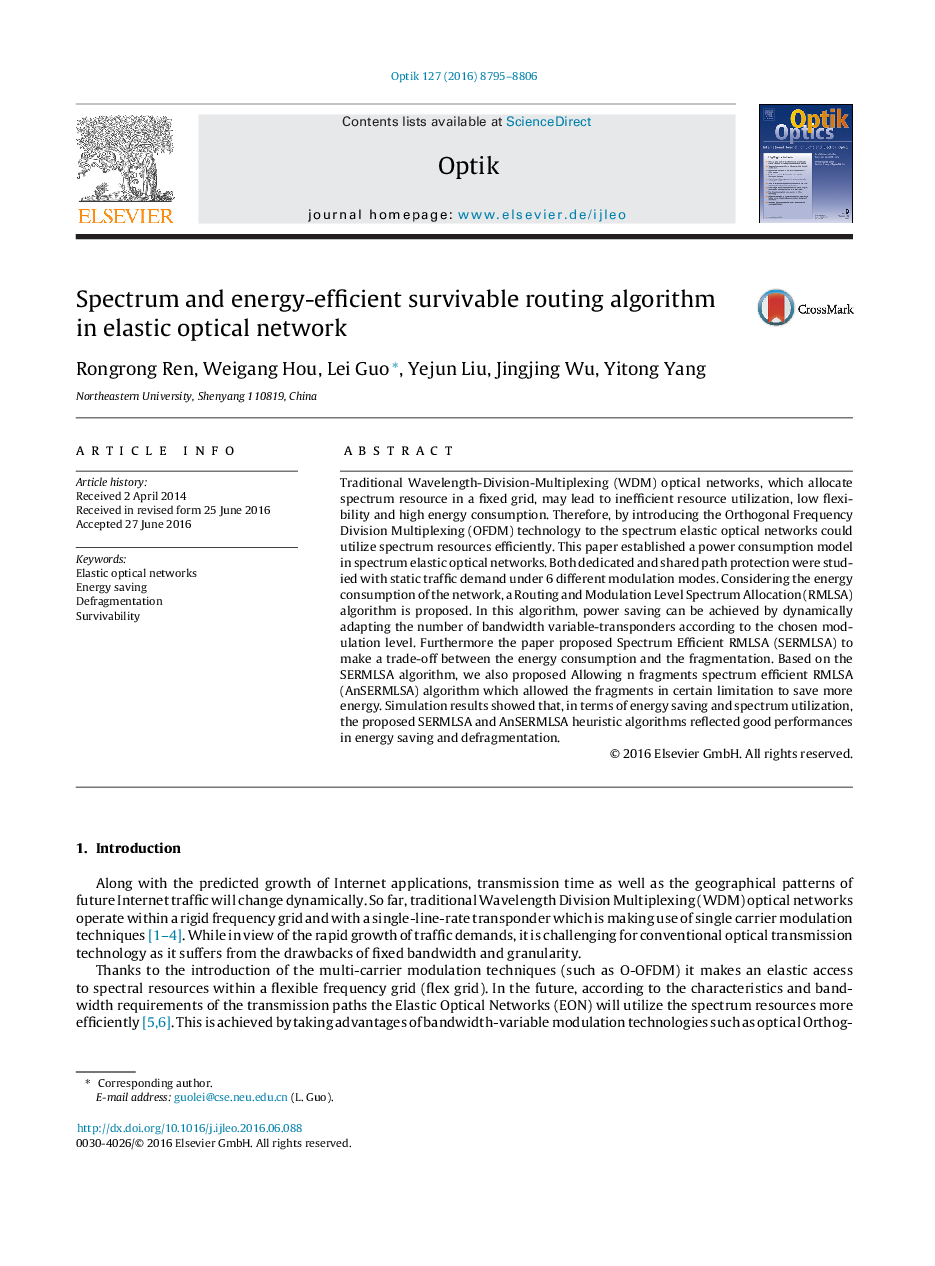| Article ID | Journal | Published Year | Pages | File Type |
|---|---|---|---|---|
| 10428505 | Optik - International Journal for Light and Electron Optics | 2016 | 12 Pages |
Abstract
Traditional Wavelength-Division-Multiplexing (WDM) optical networks, which allocate spectrum resource in a fixed grid, may lead to inefficient resource utilization, low flexibility and high energy consumption. Therefore, by introducing the Orthogonal Frequency Division Multiplexing (OFDM) technology to the spectrum elastic optical networks could utilize spectrum resources efficiently. This paper established a power consumption model in spectrum elastic optical networks. Both dedicated and shared path protection were studied with static traffic demand under 6 different modulation modes. Considering the energy consumption of the network, a Routing and Modulation Level Spectrum Allocation (RMLSA) algorithm is proposed. In this algorithm, power saving can be achieved by dynamically adapting the number of bandwidth variable-transponders according to the chosen modulation level. Furthermore the paper proposed Spectrum Efficient RMLSA (SERMLSA) to make a trade-off between the energy consumption and the fragmentation. Based on the SERMLSA algorithm, we also proposed Allowing n fragments spectrum efficient RMLSA (AnSERMLSA) algorithm which allowed the fragments in certain limitation to save more energy. Simulation results showed that, in terms of energy saving and spectrum utilization, the proposed SERMLSA and AnSERMLSA heuristic algorithms reflected good performances in energy saving and defragmentation.
Related Topics
Physical Sciences and Engineering
Engineering
Engineering (General)
Authors
Rongrong Ren, Weigang Hou, Lei Guo, Yejun Liu, Jingjing Wu, Yitong Yang,
